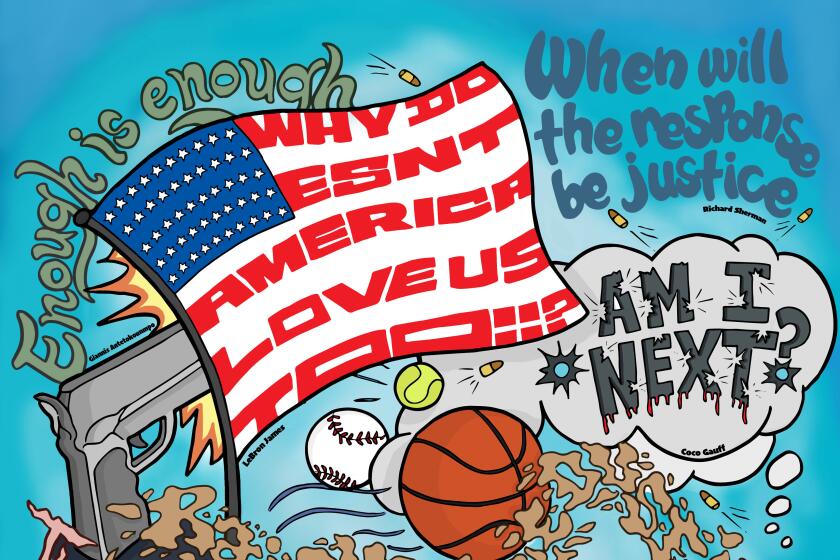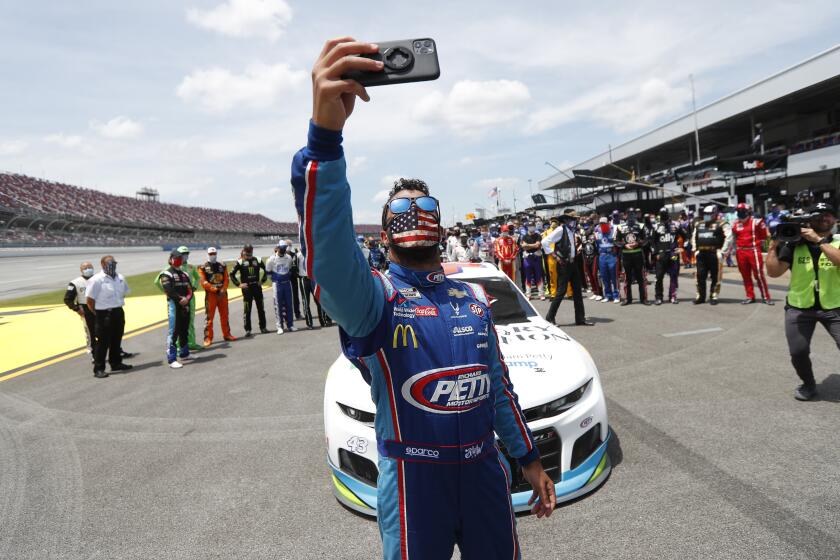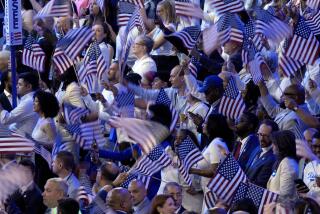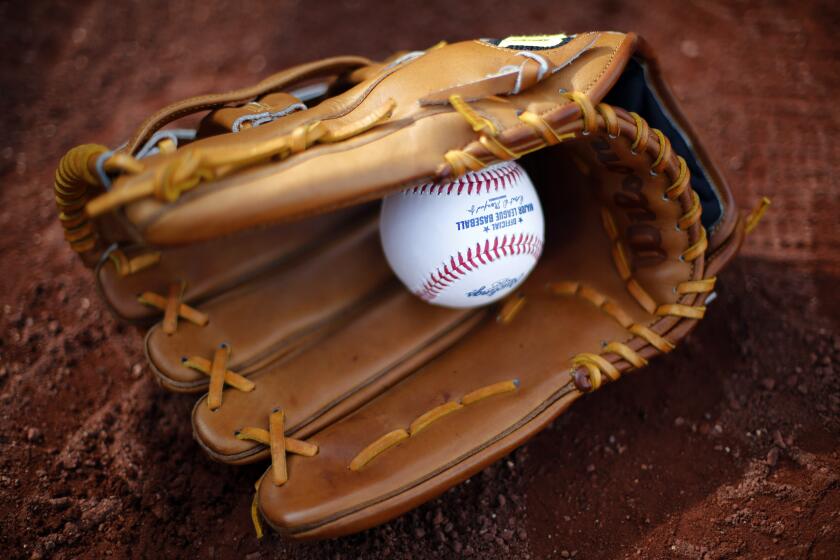Column: NASCAR rallied to Bubba Wallace’s side, but the Confederate flag still flies nearby
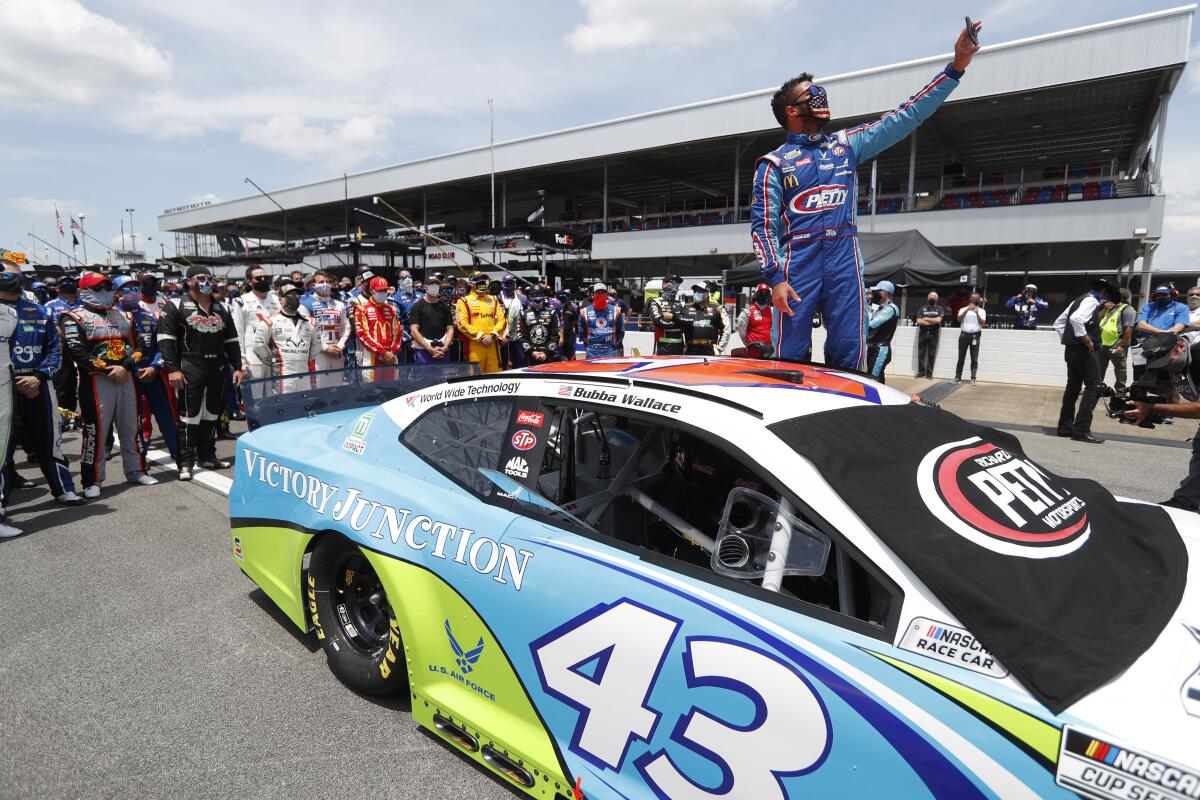
- Share via
Before she became Alabama’s governor in 2017, Kay Ivey was the state’s lieutenant governor and before that, its state treasurer. Born about 40 miles from Selma, the 75-year-old Ivey was a freshman at Auburn University in 1964 when the school admitted its first Black student. The following year, state troopers attacked peaceful civil rights protesters with tear gas and clubs as they crossed the Edmund Pettus Bridge. Pettus, mind you, had been a Confederate general and grand dragon of the Ku Klux Klan. During this period of tumult and social awakening Ivey was performing blackface on campus with her sorority sisters, an act for which she apologized last year.
All of which leads me to this question: Are we asking too much of NASCAR?
Yes, the show of solidarity for Bubba Wallace before Monday’s race was beautiful to witness, as was his post-race sprint of gratitude to his “bad-ass fan base” following his 14th-place finish. Yes, the sport’s support for him is undeniable. NASCAR’s commitment to being antiracist, however, remains a work in progress. The FBI has launched an investigation into who hung a noose in Wallace’s garage stall this weekend, and that, too, is important. But the noose — inarguably a symbol of terror, and a thinly veiled threat against the driver’s life — should not distract from the far more difficult fight in front of Wallace and his sport. The one for which Wallace made headlines in the first place.

Bubba Wallace’s fight is with the Confederate flag and what it represents. Not the sanitized version in which the bearer neglects to mention slavery and secession. For all of NASCAR’s admirable efforts, that flag may no longer flap inside speedway walls, but is not out of sight, as evidenced this weekend by the convoy of flag-bearing vehicles just outside, by the plane flying Dixie overhead Sunday, with the message “Defund NASCAR.”
And that flag is certainly not out of mind, no matter what Ivey tried to suggest otherwise Monday, when she said she was “shocked and appalled to hear of yesterday’s vile act against Bubba Wallace in Talladega.”
Appalled ... maybe.
Shocked? Come on.
In the wake of the George Floyd killing, athletes and leagues have led with bold words and actions, but will the power of their protest carry over to the games?
Harold A. Franklin did not pretend to be shocked by Sunday’s incident. The 86-year-old Franklin was the aforementioned first Black student admitted to Auburn. Born and raised in Talladega, he enrolled as a graduate student after successfully suing the university in 1963, a year before Ivey arrived for her freshman year. Former Gov. George Wallace, a man Dr. Martin Luther King Jr. referred to as “perhaps the most dangerous racist in America today” sent law enforcement to prevent his entry. Franklin was escorted past the state troopers by the FBI. Today, after a distinguished academic career, Franklin works part-time at a mortuary in Talladega.
“No I wasn’t shocked,” he said in a Monday afternoon interview with The Los Angeles Times. “There is still racism out there, man, so it’s not unusual for racism to appear around here. We do the best we can and we keep going.
“A lot of sports do a lot of crazy things, but I never saw a sport that loves the Confederate flag as much as auto racing. I know that money is involved in it. People don’t want to lose out on those kind of people opening their wallets and things like that. I get it. Doesn’t mean it’s not tied to racism, though. There was a point in which seeing that flag was dying down around here, and then the racing started and I saw so many Confederate flags around here you would have thought the Civil War was going on.”
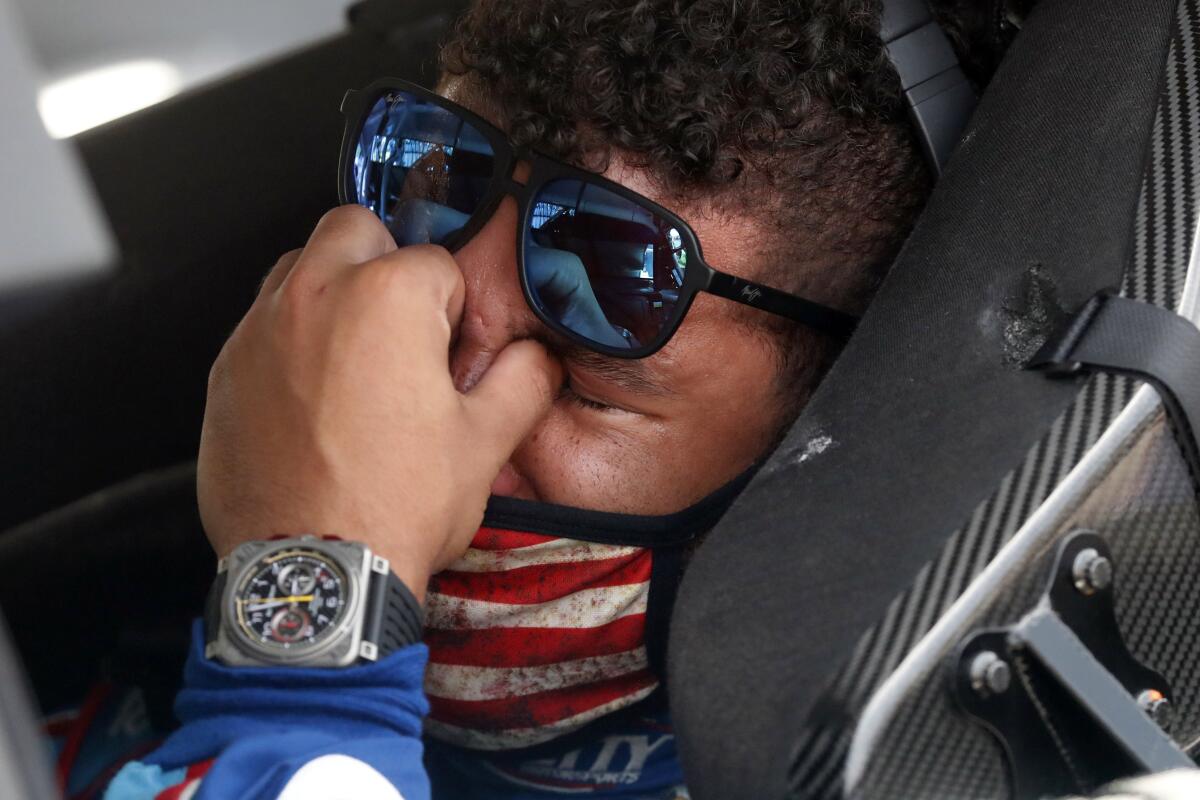
Each time he sees the flag Franklin is reminded of the segregated South of his youth.
“There’s no question they used to fly that flag to send a message to Black people,” said Franklin, who left Auburn without graduating because he couldn’t get approval for his thesis. To complete his master’s degree, he transferred to the University of Denver, where he counted former Secretary of State Condoleeza Rice as a classmate. “I remember growing up and anything white people owned they put that flag on it. … the courthouse, apartment buildings, even some of the schools had them flying at the door. You always had people try to scare you with that flag. I just ignored it and tried to keep going.
A day after a noose was discovered in Bubba Wallace’s garage stall, NASCAR drivers show their support of the Cup Series’ only Black full-time driver.
“But I’m not surprised about what happened with the noose and flag and all of that. I believe it will never disappear because there will always be someone to fly the flag to try to send a message. Try to tell you that you don’t belong.”
All of which makes Ivey’s statement about her shock not merely naive, but insulting. Have things improved since she and Franklin were on campus together in the mid-1960s? Absolutely. But if elected officials lack the fortitude to acknowledge the true state of our union, why should a sport that relies on the willful ignorance of its fan base be held to a more ambitious standard?
The noose is a clear attempt to intimidate Wallace, to threaten him. But if you listen to Harold A. Franklin, so too is the flag Wallace spoke out against. NASCAR should be applauded for standing by Wallace. Now, however, against the backdrop of fans who have merely taken their Confederate flags a few hundred yards down the road, we will see how hard NASCAR will fight now that the flag is fighting back.
More to Read
Go beyond the scoreboard
Get the latest on L.A.'s teams in the daily Sports Report newsletter.
You may occasionally receive promotional content from the Los Angeles Times.
